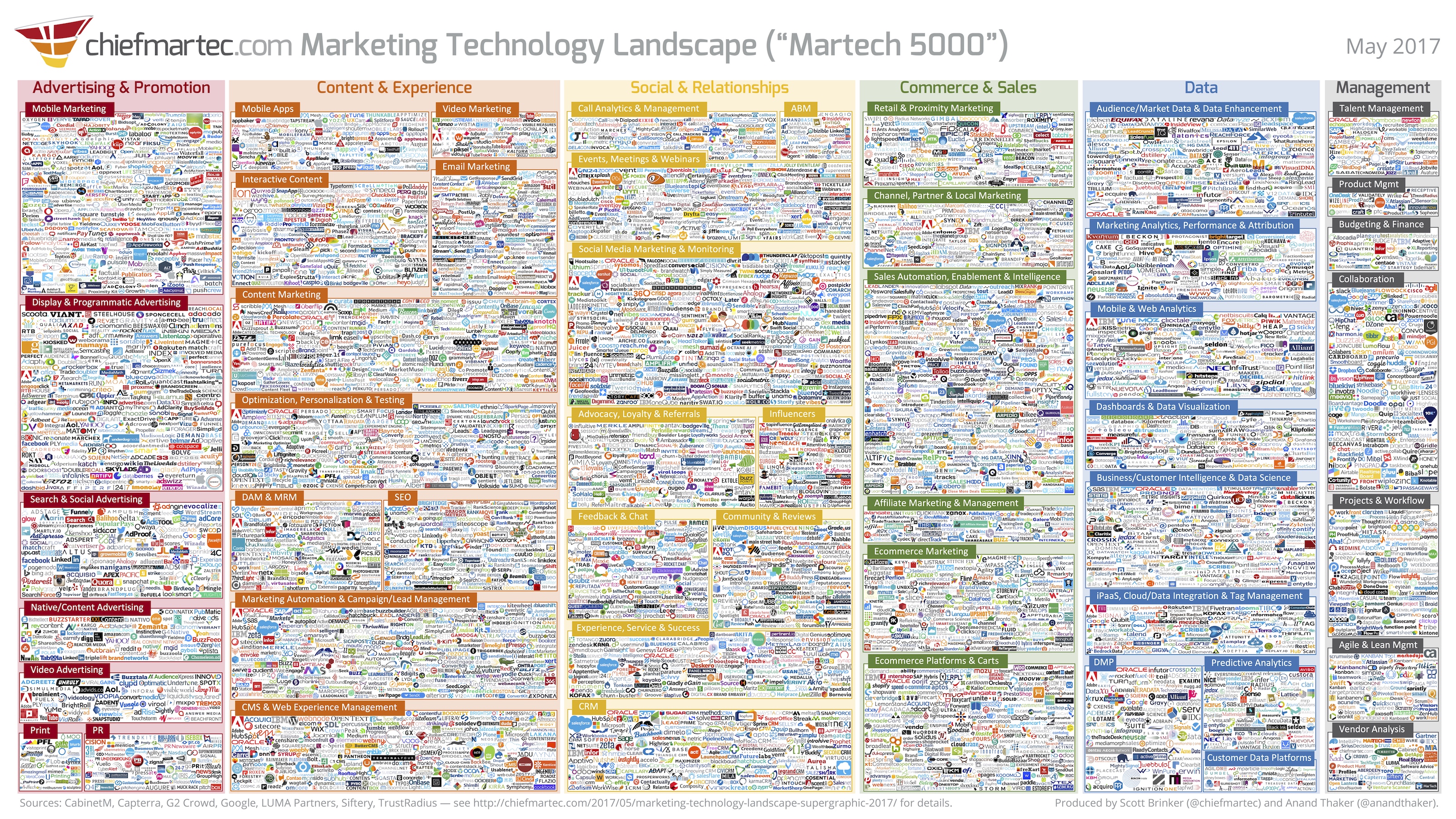Marketing tool overload
By: Ryan Burgio
September 28, 2016 | Reading Time: 4 mins
You know that guy. Walk into his garage or shed and he’s got every new fancy tool. He’s got the latest sander, heat gun, grease gun, mitre saw, and scroll saw. But take a look around some more, and he hasn’t fixed or built a thing. Those tools still look pristine.
Marketing has the same problem. So many tools, so little impact. Take content marketing for example. With all the fancy new marketing tools, most content marketers are feeling overworked and overwhelmed.
According to ChiefMartech.com, there over 3,500 marketing technology tools available. Look at the evolution of marketing technology below. It’s mind-boggling.
Tools don’t replace talent
As the founder of a digital agency, this may sound counterintuitive, but you don’t need a lot of tools to do great marketing. I know, I’m supposed to be preaching from on high about the virtues of marketing technology. I’m supposed to say how it will transform your business and make you know everything about your customer.
Malarkey! No marketing automation, content management system, sales enablement, or social media management tool offsets what’s at the heart of great marketing; insight, creativity, and most importantly, an understanding of the human condition.
I consider Elon Musk to be one of the great marketers of our time. He’s bold and brash. He understands suspense and storytelling. He challenges conventional wisdom. His toolset? Twitter.
Load up on all the tools you want. Get every insight you need. Work from thousands of data points. Design faster. Write better. But don’t be the person who hasn’t built a single interesting thing with all the fancy tools.
We need some ground rules
Here’s where I’m going to contradict myself. We use a lot of Martech tools at Stryve. We love Hubspot, Hotjar, Google Analytics, Pardot and Slack to name a few. And yes, we consider Slack to be a marketing tool. Tools are great in moderation, but they aren’t the focus at Stryve. We’re more interested in understanding the human condition. I’ll take reading Robert Cialdini’s latest book on persuasion over trying out a new tool any day. Adam Grant’s book Originals has provided me with more marketing insight than a content platform ever could.
But tools do help, and so we’ve got some ground rules here at Stryve that we’d be happy to share.
Rule #1: You’ve got 30 days
Do you want to implement a fancy-schmancy new tool? Great. You’ve got 30 days to deep dive. After 30 days, you do a quick report on the pros and cons. If you can prove it out, we’ll use it. If you can’t, then it’s on to the next one.
Rule #2: No more than two new integrations per quarter
There’s only so much we can handle. If we’re going to use a new tool, we need the time and space to really learn it. At most, we can handle two new tools per quarter. Sure there are other tools that may save us time and money. But we can only do so much. We’ll get to that next tool next quarter.
Rule #3: We’re not first-movers
When it comes to marketing technology, we’ll wait to see how the technology plays out. We’re not big believers in the first-mover advantage. We like to be early adopters, but unless there are some companies already using your revolutionary new social media analytics tool, we’re not interested.
Rule #4: It’s better to stick than switch
What? Are you crazy? You’d rather stick with an outdated tool that’s not as fancy as this new one? But this one is much better. It can track customer sentiment on 57 different levels and tell you exactly which creative works best. This may seem counterintuitive, but the costs of switching are very real. We’re not switching for incremental results. We want a big leap. But we do occasionally switch. For example, we recently switched to Hubspot Sales. It was so much simpler and cost-effective than our current solution that we switched immediately.
What you say vs. how you say it
But back again to my main point. I hear it in meetings all the time: people love jumping into tactics and tools. “We’ll start with a blog, then we’ll amplify it through email and social using our new fancy content platform.” There’s a whole board full of tactics. We love to focus on the how – the tools. People love this phase because it’s all about trying out this new software. It’s exciting. It’s fun. But it’s also easy.
It’s better to start with the what. What do you want to say? Why do you want to say it? Does anyone truly care about your message? Are you just creating another eBook that no one will read? Spend 85% on the what. Attack the what from every angle. Make sure it’s awesome.
Then you can play with your new tool.









